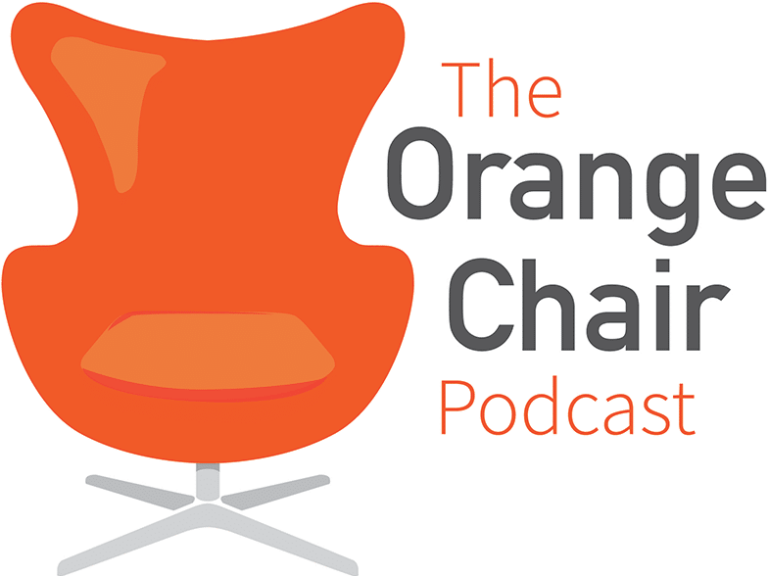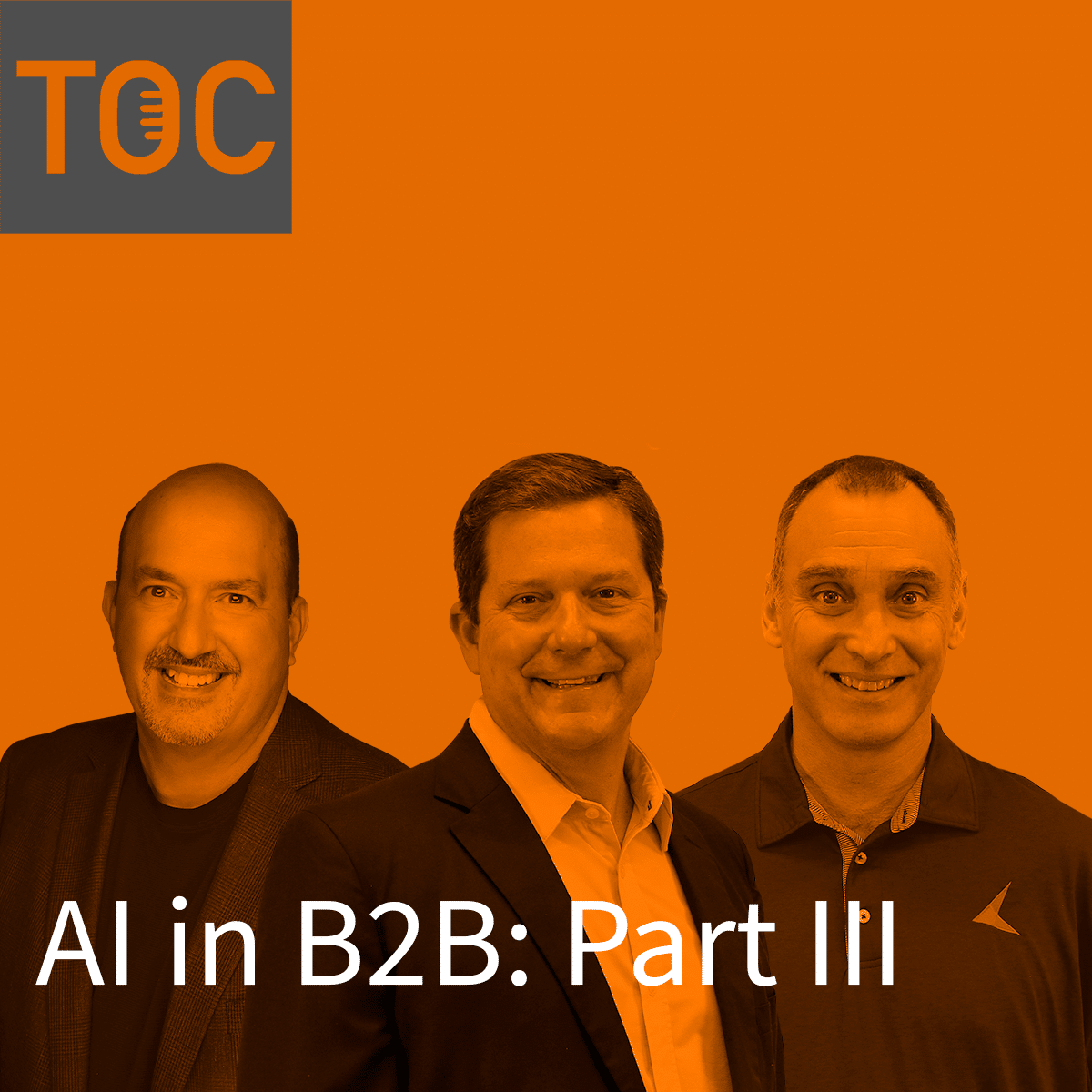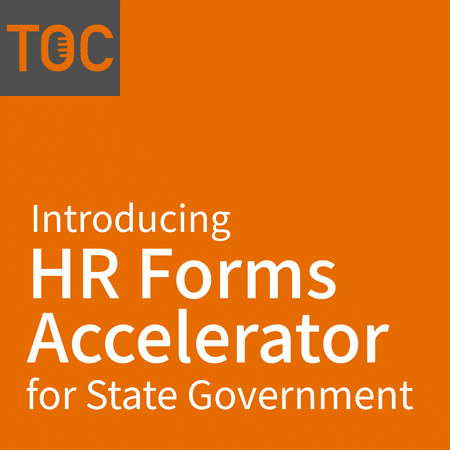This website uses cookies so that we can provide you with the best user experience possible. Cookie information is stored in your browser and performs functions such as recognising you when you return to our website and helping our team to understand which sections of the website you find most interesting and useful.
Listen now on your favorite streaming service!
presented by KeyMark


Summary
The following is a transcription from The Orange Chair Podcast, “Deep Dive into Hyland WorkView”
This episode is our second installation of our Hyland Podcast Series where each episode we will dive into one of Hyland’s offerings. In this episode, we sit down with Larry Moscovic, Technical Sales Manager at Hyland, and Dan Preputnik, Specialty Sales Engineer at Hyland. We talk about Hyland WorkView and how organizations can implement a WorkView solution successfully and answer the questions you want to know.
To listen to the full episode or any other episode, you may do so by selecting your preferred podcast listening method on The Orange Chair Podcast Page.
To listen to the full episode or any other episode, you may do so by selecting your preferred podcast listening method on The Orange Chair Podcast Page.
Transcription
Host (18s): Hi everyone and welcome back to The Orange Chair Podcast. Today is the second episode of our Hyland podcast series. Today will be talking about Hyland WorkView and I have two guests with me today from Hyland who are experts in Hyland WorkView. I will go ahead and let you guys introduce yourselves.
Dan Preputnik (34s): Thanks so much, Alex. Hi, I’m Dan Preputnik. I am one of the product specialists and solution engineers for the specialty team at Hyland. I’ve been working with the OnBase product for about 18 years. 10 of those I was one of the leaders of our internal OnBase system. And now I’m primarily focused on WorkView and building business applications.
Larry Moscovic (59s): Good morning, Alex. Good morning, Dan. My name is Larry Moscovic. I’m the manager of the WorkView sales team at Hyland software, but I’ve been with Hyland for about 10 years. We really started formalizing the WorkView sales team a couple of years ago. Dan and the rest of the guys have done a great job of getting out in front of our existing customers and new customers talking about the great things WorkView can do for them.
Host (1m 21s): Well, you know, I always like to kick off my episodes by asking a fun fact. Can you tell me a fun fact about yourself?
Dan Preputnik (1m 32s): I can play the piano upside down. I’m upside down, not the piano.
Host (1m 37s): Oh, fun. How’d you learn that skill?
Dan Preputnik (1m 41s): I was a bored 11-year-old with a lot of free time and I learned how to do it.
Host (1m 48s): That’s awesome. What about you Larry?
Larry Moscovic (1m 50s): A fun fact about me? I sang karaoke with Steve Perry many, many years ago. The lead singer Journey. When I was living out in California, we randomly ran into each other at a bar and I was singing one of their hit songs at the time and he happened to be there. He came up and showed me up on stage. It was a heck of an experience.
Dan Preputnik (2m 11s): I mean, there is so much musical talent on the WorkView team, we should just start a band.
Larry Moscovic (2m 16s): We just need to get a drummer and a guitarist.
Host (2m 19s): What was the song that you were singing?
Larry Moscovic (2m 21s): Don’t stop believing.
Host (2m 22s): That’s a classic. Thank you guys so much for joining me today. Let’s go ahead and jump into this podcast. I want to start by asking if you can give me a history of WorkView? Can you tell me the story? Where did it start and where is the solution now?
History of WorkView
Dan Preputnik (2m 45s): WorkView is Hyland’s rapid application, low-code business solution building tool. It has been around since about 2003 when Hyland realized we had been doing documents and content and business processes through a WorkFlow for years, but we needed a way to manage larger volumes of data. So, we built this tool.
We started using it internally as our own CRM system for 10 or 15 years and that product grew and changed. As of OnBase 18, we can combine the data along with all the processing available through WorkFlow.
That was a huge game-changer. In OnBase 16, we unified our database and brought all the components together, which added performance and efficiency. In OnBase 18, we enhanced the UI design and capabilities and added a number of rapid application accelerator tools to really help us prototype faster.
Now we are continually evolving and building out the capabilities of the platform through APIs and visual enhancements and furthering those methods as we go.
Larry Moscovic (4m 6s): I feel the best way to describe WorkView and how it benefits an organization is its a tool that you can use to build applications where you want to leverage your documents and data in a workstream or a work process. You bring the best of what OnBase has to offer with our WorkFlow engine and the document storage, and you build an application around that that can be used to track notes, tasks, activities.
You can move that document and the corresponding information through a business process to a final resting point where we can then report on it and do some other really cool things. It’s something that we have seen a lot of growth in over the last several years because the evolution is there.
We sold so many scan, store, retrieve workflow solutions, and now the natural evolution is “what do I do with this content? I have all this data, how do we make it work together?” And WorkView is the tool for that.
Flexibility of WorkView
Host (5m 1s): What kind of applications are typically being replaced with WorkView right now?
Dan Preputnik (5m 12s): We look at what WorkView benefits and why it is important.
As Larry said, it’s combining all those things and the convergence of all the things you care about. The industry term over the years has gone from case management to records management to low-code to rapid application and all of the above.
So when we think of the word “case management”, what it should really be is, “the thing you care about” management. That encompasses a very wide grouping of potential solutions because you want to have the thing that you’re tracking, the information, the document and content that supports it, the processes around it, the task activities, and the story around that thing that you care about.
From a solutions standpoint, whether we are talking about employee file management or records or investigations or exceptions or tracking assets or tracking facilities or managing contracts, it’s the story around, “What is the thing? How are my pieces of content, (images, invoices, etc.) related? Who’s the owner? How often do we need to review this? Who did I speak to?”
Think of it as a CRM for anything. That’s the value and the types of solutions that we can provide. Where our imagination takes it, those are the types of things we can solve.
Larry Moscovic (6m 47s): I think the other end of that, it’s not so much replacing as it is more integrating. We ask the question, “What systems are we going to integrate with and how are we going to push and pull that data on that information?”
I think of WorkView, and a lot of the customers and partners we work with think of WorkView, as more of a data aggregation tool because you have all these systems out there that manage parts of a process.
If you think about the higher education space and managing data for a student, there are like 12 systems that manage a student and manages their record, their housing, their food allotment, and all these other things that are part of a student record. Well, those 12 systems all have a very important role and we may not necessarily get rid of one of them, but we may want to surface that information and all of that data in one place.
That place can be a WorkView application. At that point in time, you can take advantage of the documents or some of the student records that you have inside of OnBase and start building out an application to manage that a little bit better because it is all in one place.
Dan Preputnik (7m 46s): That’s really one of the most important pieces and I’m glad you brought that up. When we talk about convergence, it is the ability to reach into other live systems in real-time and then create a centralized, unified interface for those users, as well as potentially have a central repository for all of the documents and content and notes and those types of things.
We’re also looking at whether we are replacing an old access database or an old AS400 system or just the business-critical data in an Excel file on employees computers which are on their local computers that aren’t backed up or can’t have documents attached and don’t have business processes that can kick off notifications and reminders.
Those are the types of things we’ve seen at every company everywhere, always. Those are some of the low hanging fruits that allow us to really take that “Swiss Army Knife” that the Hyland OnBase platform provides and just assemble the “Lego bricks” or “Lincoln Logs” or “Minecraft resources” (depending on your generation) and build a solution that fits whatever the business need is.
Larry Moscovic (9m 2s): I think you dated us by calling out Lincoln Logs, Dan.
Industry Specific Uses of WorkView
Host (9m 9s): You guys mentioned an example of education with student records management. What are some other types of industries that you see WorkView benefiting?
Larry Moscovic (9m 20s): We see WorkView across every vertical and across every type of organization. That’s really the cool part about the product. It really is applicable to any industry, any vertical, and any need for a solution that could be out there.
Our commercial space at Hyland is such a vast customer pool. We have probably the most solutions out there. I think there are over 500 in that space. That’s not to say that’s the only verticle. Higher Education has 60 or 70 solutions and Healthcare has a couple of hundred solutions. So it is applicable everywhere.
Once you start to break it down specifically, for Healthcare some of the top ones were seeing today are our auditing property in facility management, patient referrals, sharp corrections, physical records management, and, clinical risk management just to name a few.
Dan Preputnik (10m 16s): You always want to track trends, with volume, bandwidth, throughputs, and what types of things you are seeing. Whether it’s incidents or investigations or cases or assets. What is our risk level? How many things are we working on? What is the average time it’s taking us to work on these things?
WorkView then provides those knowledge workers with both those high-level data insights, and also is able to open up those records in those cases, and have all the information, all the documents, all of the images, all of the video files, emails, and notes at their fingertips, while being able to then move things through a defined process to a resolution.
Larry Moscovic (11m 2s): One of the newer solutions that we’re working on is a safe return-to-work application. There are really not too many systems out there that can do this today, but we can build something pretty quick with WorkView.
What were trying to help with would be if a new employee wants to come back to work. Maybe they are going to be part-time coming back to the office and working in their home office. How do we manage that? How do we make sure there is a desk location and an office phone and a chair, and all of those things that you need if you’re going to be going back into the office?
Conversely, if they are part-time, how do we set up my workspace for that? Or if they are remote full-time, we can account for things like internet usage, and maybe I need to order some supplies or things like that. We’re building something out around that.
I think it is going to be a very good tool for us to get out to the customer base, as we’re starting to open back up and return to the new normal and return to work.
WorkView and COVID-19
Dan Preputnik (11m 59s): That’s really one of the major benefits that we see as the specialty team of the platform. It’s that rapid application ability when there is a new need that didn’t exist a year ago; we can rapidly spin up a solution and then even repurpose that same type of solution to be used just for employee onboarding in general.
When we had the need to actually track COVID-19 incidents when we were still in the office tracking who interacted with who and that type of relational database are all a part of what we can do with solutions now that didn’t exist as an off the shelf type thing a couple of years ago.
Larry Moscovic (12m 46s): I think the key points to hit on are that it’s fast. We can create solutions a lot faster than we used to because we’ve taken the time to learn about the intricacies of the product and how to effectively build faster and build better.
The time from ideation to sandbox to production is much faster than what it used to be, just due to how we can leverage some of the tools inside of WorkView such as the Application Creation Excelerator and things like that.
Host (13m 17s): You guys mentioning innovating new ways to help alleviate some of the stress of the last year and a half makes me think that’s just the beauty about technology and innovation, in general, it’s that you’re able to adapt and change and create products or solutions that help people in a time that’s so unprecedented, right?
Like no one knew this was going to happen or what the repercussions would be. I think that’s a great thing that you guys are able to find a way to help people in a way that we didn’t know we could before.
Dan Preputnik (13m 52s): That’s probably one of the biggest benefits of a low-code platform. Traditionally, all of the other systems we use, such as our major line of business system, would need a whole software development release cycle to be able to provide an answer to a problem that arises that quickly. We can alleviate the places where those systems don’t meet our needs with a rapid application platform.
Another benefit is we’re able to extend the value of other systems by integrating them and converging them with our processes.
That’s the big change that we’re seeing is that a business user or a knowledge expert doesn’t care where something is or how it got done. They just need the things that they need to do to get their job done.
So whether we’re converging data between systems or providing a complimentary or a supplementary piece of technology to an existing system, or building a whole standalone solution, WorkView gives us so much flexibility in an ever-changing market.
WorkView Use Cases
Host (15m 10s): Can you guys give me some specific use cases where you see an organization could use WorkView or this rapid application deployment?
Dan Preputnik (15m 19s): In general, every company has needs, whether it’s asset management, tracking incidents, any kind of inspections or quality control. Or maybe there is some kind of bid or an award or a grant and managing contracts and the life cycles around that and all of the renewals and things that you need to be timely with.
If we get into HR, that’s another whole bucket with employees’ cases whether we’re talking about a library of jobs and responsibilities and career maps or drug and alcohol testing, onboarding and offboarding or FMLA and leave requests, performance management objectives, and key results.
Again, in almost anything we can think of that needs to be solved like, vendor reviews and vendor management. Service tickets are another one where we’re talking about an IT help-desk. This can be used by anyone who says, “I need help, I need a thing or, I have a question” which is traditionally done in Outlook today. My question is always, “can you track that? Could you build a knowledge-based off of that? What does your bandwidth and through put? How do you want to evaluate needs for future headcounts?” You can’t do that in outlook.
Project management and then project portfolio management really speak to the benefit of having a low code application system. Something like a project portfolio management, where we are managing the list of possible initiatives that we might do, and one initiative gets approved where an executive signed off and the scoring has been marked as correct.
That can then kick off the actual project record in which we track the people involved with the documents and the information and the processes and all of the reminders.
Those things are both independent yet interconnected and throughout all of the systems and all the types of solutions that we’ve mentioned helps us see connections that we didn’t even know existed or knew to care about down the road.
Larry Moscovic (17m 42s): Dan, you really hit on all of those horizontal solutions that related back to your question about, “where do we see a fit?” It’s every industry, it’s every vertical, and it’s every organization out there that can leverage one of those solutions that Dan mentioned.
We have a marketplace where you can download some of these concept solutions that Dan was able to just speak through. Then we also have very specific industry solutions.
You think of insurance and financial services, there’s, unfortunately, fraud that takes place an in those industries. So we want to make sure that we can track a fraud case and get it to a resolution. That’s a good solution that we have, and that’s very specific to a need. Same thing in the healthcare space with the clinical risk management.
So we have all of these horizontal solutions, but we can also be very specific with industries and with customers and prospects about their specific needs and how we can tackle it for them.
Dan Preputnik (18m 35s): We also see in the government sector, whether it’s public records requests or for the EPA. We need to manage every day, every instance of an issue and tie that to a constituent or a business and be able to track those trends over time.
We need to determine what the policy violations are and attach the actual documents and photos and supporting information of those cases. It’s both the bottom level of interaction with that case, and also the high-level data and metrics that really give us the value across the board.
Host (19m 17s): How do you guys see current customers is using WorkView?
Larry Moscovic (19m 20s): Any number of ways that we’ve talked through today. Most notably, because of the current situation of the world and with folks being remote and not being back at an office, we’ve seen property management being a big thing that has kind of taken off over the last 12 months.
Another good example would be banks. They have all of these branches, locations, and ATMs and apps and all of these things in which they need to manage. Typically they’d have some folks driving around and checking it out, or they’d have people in those locations that can submit a request for something. Well we shut the world down there for a number of months and some things we’re not being tended to. Managing, not only the properties, but things that they need to a fix or maintain, or maybe even order in a timely fashion.
There wasn’t really a solution out there that handled that and we were able to spend something up in a pretty quick manner and get it out to them.
Property management has been a big thing across all industries and all customers. I mentioned banking, but it’s been pretty much everywhere. Dan, and I don’t know if you’ve seen anything like that?
Dan Preputnik (20m 32s): I think it’s a challenging question because everything that we’ve said exists similarly somewhere at a company site. There is such a great free flow of ideas and solutions between our customers and ourselves and our partners and a bond up ay Hyland.
The Hyland community site is where these ideas that someone has are, or a need that we are not even aware of comes up. And because of the flexible nature of this platform, it’s really where your creativity is.
Case in point, I built a doughnut inventory management app for fun one day for a conference we did just to show the point of “I need to track a thing, and I need to track someone ordering that thing and the invoice around it. And then i need some metrics around which customerwas eating the different types of doughnuts and then I need a reporting dashboard using pie charts, in which we take out the center to give us a doughnut chart. That works out perfectly for tracking the volume of and places, and then be able to do quality control with all of these doughnuts.” Those types of things sound silly, but the base level concept of what we’re doing is tracking a thing and tracking the stuff around that thing, putting it through a process and getting metrics on it.
Just interchange the words as needed, and we can assemble those Lincoln Logs in whatever way you want for the use case.
How to Use WorkView Now
Host (22m 21s): You guys have mentioned many use cases and examples and the ways that people can utilize WorkView. Is there a way for OnBase customers to access the WorkView application now and try it out for themselves?
Larry Moscovic (22m 35s): We have a site called Try.Hyland where you can login if you’re a Hyland customer and you have access to different sandbox environments, where there are probably 20 or 25 different solutions that are available out there for you to get in and test out and play around with it to see how it works and how it could potentially work for your organization.
It is something that is widely used across our customer base and it really is that first step of really getting your feet wet and saying, “What is this? How does it work in a vendor management solution? What does that look like?” That Try.Hyland cite is a great location to go and do that.
Dan Preputnik (23m 17s): Actually just to slightly correct you Larry, I believe there are 45 concepts at this point. Just to speak to rapid application. Larry is probably quoting what our account was six months ago.
Not all of those are completely available within the live system that you can play with, but what’s great is that a lot of them are. All of them have a guide and business benefit challenge or documentation around what they are.
They can even be downloaded and installed in your own system if you want. The greatest part about the ones that are hosted is that its the greatest place to learn because it is a system that gets spun up just for you and as soon as you log off, it gets destroyed.
So go in there as a user and go into the studio to learn what someone else has done. Deconstruct it, press every button with impunity, because it is a safe system because that is often the best way to go and learn without any risk to what you’re doing.
Larry Moscovic (24m 27s): I’d also like to plug the Hyland Marketplace, where you can download the solutions and put them in your environment. If you need either a license in your test environment, or you want to put it in a production environment, we have an overwhelming majority of the solutions we talked about. They are available as a download for you as an administrator to go in and start playing within your own environment.
Hyland Community
Host (24m 53s): Great. As our time comes to a close today, I wanted to know if you guys had any final thoughts? Is there anything that I didn’t ask that you wish I had or is there anything that you’d like to elaborate on? This time is yours.
Larry Moscovic (25m 8s): I don’t think I’d be doing us enough justice if I didn’t, first of all, thank you for the time that you’ve given us today, we really do appreciate it. I just want to plug my team.
We have a team dedicated to all things low code, rapid application, WorkView. They are some rockstars and they’re willing to jump in and help with anything that your customers may need. We can come in for a workshop for a couple of hours to go through a use case for what you have, and then we can help to prototype that and build it out in a lightweight fashion and deliver back to the customer.
There’s also a lot of education that’s out there as well on the Hyland websites, between training on Hyland and premium subscription.
That is something that we are working very closely with our counterparts in education, to make sure that we’re keeping up-to-date with all the things that we’re learning and what we’re seeing. They’re putting some great content out there too.
Last, but certainly not least, are just the conferences that we’re starting to ramp back up. We were able to do Tech Quest remote over the course of the last year and a half and we’re still offering Tech Qest.
We also have CommunityLIVE, which is the big Hyland conference coming up in October. We’ll have more of a technical focus on the product set and things out there.
I guess I’m just going to say that we are here to help and we are willing to help in any way that your customers could potentially use it.
Dan Preputnik (26m 34s): Just to elaborate a little further on the workshop, those or such a great opportunity. We want everyone who is interested to take advantage of it.
We’ve probably done 200 of them when we were still traveling. Now that we are doing them remotely, it’s a couple of hours where we are your personal tutors for whatever your need is. For example, if you want to take an old database or an old flat file and try to convert it into an application, we can actually get in there and help you prototype and do as much or as little handholding as needed.
As Larry said, the conferences are such a great place to interact with others, especially as we kind of roll back to normal over the next few months or a year or so to really collaborate network.
We also have an app builder community on the Hyland website where we are virtually talking all things low code, rapid application, WorkView, WorkFlow, and all of the things that you can buy and bricks that you can assemble.
We’re putting on the site design guides and white papers and best practices, and little snippets of code or CSS, and things that can help take your solutions to the next level.
There’s also a forum where customers are asking questions and often other customers are answering those before we can even get to them. They will ask, “how did you solve this problem for a specific industry?” I think it may be one of the most active communities on Hyland’s website.
It’s a great place to raise the bar across the board. It’s very collaborative and helpful. We love to nerd out about low code all day, every day.
Larry Moscovic (28m 35s): It’s nice to see a great community of people that are interacting and talking all day long.
Dan makes a very good point. There are some times where we can’t get to it fast enough because we’re in meetings all day and customers will answer questions on our behalf. It’s great to see.
It has also opened our eyes to say “we didn’t think about it that way or that’s something that we weren’t even considering”. It is an amazing tool and is something we would love for everyone to take advantage of and get in there and drop a line and ask us a question. We will certainly answer it as fast as we possibly can.
The other thing I will leave with is to suggest an enhancement request in anything that you think the product could or should be doing. We’re all ears on that as well. If you think that there is a need for an enhancement of some sort, feel free to drop that in there as well. We’ll run that up the chain of command and see where it goes.
Wrap-Up
Host (29m 24s): Well, thank you guys so much for your time today. Thanks for answering my questions and having this discussion about WorkView. I appreciate it.
Larry Moscovic (29m 48s): Thank you, Alex. We appreciate the time as well.
Host (29m 51s): Thank you for joining us on The Orange Chair Podcast. This podcast is brought to you by KeyMark and is produced by Clay Tuten and me, your host, Alex Frazier. For more information on OnBase by Hyland, please visit our website at www.keymarkinc.com/OnBase-software.
Never miss an episode by subscribing to our podcast channels wherever you listen to podcasts. Also, Like and Follow us on Instagram and Facebook at The Orange Chair Podcast. Want to get in touch? Send us an e-mail at TOC@keymarkinc.com.







